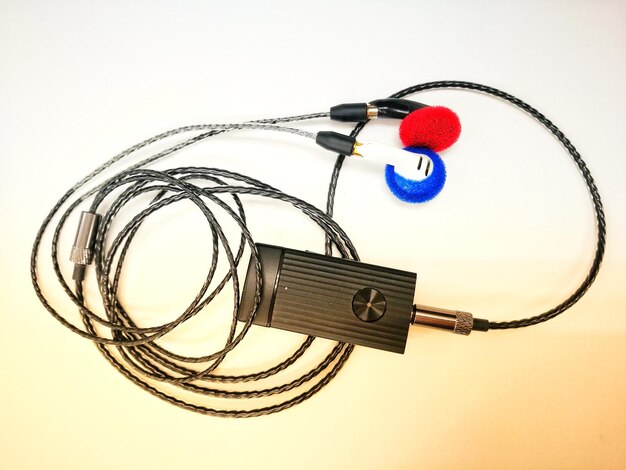Electrical hazards are a serious concern in industrial and commercial settings, especially in the UAE, where rapid industrialization increases the risk of electrostatic discharge. A static grounding device plays a crucial role in preventing dangerous sparks that can ignite flammable materials or damage sensitive equipment. These devices help control static electricity, ensuring a safe working environment. Understanding their function, importance, and applications can help industries comply with safety regulations and minimize risks associated with electrostatic discharge.
What is a Static Grounding Device?
A static grounding device is a safety mechanism designed to dissipate excess static electricity from equipment, personnel, or materials. It provides a controlled path for static charge to safely discharge into the ground, preventing unwanted sparks. These devices are widely used in environments where flammable gases, vapors, or dust are present, reducing the risk of explosions or fires.
Key Components of a Static Grounding Device
- Grounding Clamps – Securely connect equipment to a grounded surface.
- Conductive Cables – Provide a low-resistance path for static charge dissipation.
- Monitoring Systems – Ensure continuous grounding efficiency.
- Grounding Rods – Direct static charges into the earth.
- Visual and Audible Alarms – Alert users about improper grounding conditions.
How Static Grounding Devices Work
Static electricity builds up when two surfaces come into contact and then separate. If not properly managed, this charge can discharge suddenly, causing sparks. A static grounding device provides a pathway for the static charge to dissipate safely. It ensures a direct connection between the charged object and the ground, neutralizing the electrical potential and preventing hazardous discharges.
Step-by-Step Working Process:
- Connection – The device is attached to the equipment using a grounding clamp.
- Charge Transfer – Static charge moves from the object through the conductive cable.
- Dissipation – The charge is safely transferred to the ground.
- Continuous Monitoring – Advanced systems provide real-time feedback on grounding status.
Why Static Grounding Devices Are Essential in the UAE
The UAE has a significant number of industries handling flammable substances, including oil and gas, chemicals, and manufacturing. The presence of electrostatic charges in these industries poses a severe safety risk. Using static grounding devices ensures:
- Fire Prevention – Avoids accidental ignition of flammable materials.
- Equipment Protection – Prevents damage to sensitive electronic systems.
- Personnel Safety – Reduces the risk of electric shocks and injuries.
- Regulatory Compliance – Meets safety standards set by UAE authorities.
Applications of Static Grounding Devices
Static grounding devices are used in various industries to ensure workplace safety and operational efficiency. Some key applications include:
1. Oil and Gas Industry
- Prevents static buildup in fuel storage tanks.
- Ensures safe transfer of flammable liquids.
- Reduces explosion risks at refineries.
2. Chemical and Pharmaceutical Plants
- Minimizes risks associated with volatile chemicals.
- Protects manufacturing processes from electrical disruptions.
3. Manufacturing and Warehousing
- Reduces static charge in conveyor belts and packaging machinery.
- Prevents dust explosions in processing plants.
4. Aviation Industry
- Ensures safe refueling of aircraft.
- Protects fueling trucks and storage tanks from electrostatic discharges.
5. Electronics and Semiconductor Manufacturing
- Prevents electrostatic damage to sensitive electronic components.
- Ensures precision in circuit board assembly.
How to Choose the Right Static Grounding Device
Selecting the appropriate static grounding device depends on several factors, including the industry, specific risks, and environmental conditions. Consider the following aspects:
- Compliance with Safety Standards – Ensure the device meets UAE and international regulations.
- Monitoring Features – Opt for devices with real-time monitoring and alerts.
- Durability and Reliability – Choose high-quality materials resistant to environmental factors.
- Ease of Installation – Select devices with user-friendly features for quick deployment.
- Industry-Specific Needs – Consider specialized grounding solutions for unique applications.
Best Practices for Using Static Grounding Devices
To maximize safety and efficiency, follow these best practices when using static grounding devices:
- Regular Inspections – Check connections and grounding integrity periodically.
- Proper Installation – Ensure grounding devices are correctly installed and tested.
- Employee Training – Educate workers on the importance and correct use of grounding systems.
- Use of Certified Equipment – Always choose certified grounding devices to meet industry standards.
- Maintain Records – Keep logs of inspections, maintenance, and test results.
Common Misconceptions About Static Grounding Devices
1. Only Necessary in High-Risk Industries
While crucial in high-risk industries, static grounding devices are also essential in everyday applications like fueling stations and data centers.
2. Once Installed, No Maintenance Required
Regular maintenance is necessary to ensure the grounding system functions properly.
3. All Grounding Devices Are the Same
Different industries require specific grounding solutions. Choosing the right device is essential for optimal protection.
Regulations and Compliance in the UAE
The UAE has strict regulations for industrial safety, including static grounding requirements. Authorities such as the Emirates Authority for Standardization and Metrology (ESMA) and Dubai Municipality enforce safety standards to minimize electrostatic hazards. Industries must comply with these regulations to ensure safe operations and avoid penalties.
Conclusion
Static grounding devices play a vital role in preventing electrical hazards in the UAE. By dissipating static electricity, they protect industries from fire risks, equipment damage, and safety violations. Understanding their function, applications, and best practices ensures maximum protection in high-risk environments. Proper implementation and regular maintenance of these devices help businesses comply with safety regulations while ensuring a secure workplace.



